If you’re from the Midwest, you’re probably familiar with Ball Mason jars. The Ball brothers cranked out millions from a sprawling complex on East Memorial Drive in Muncie! It’s been sixty years since the furnaces last fired, but a spin-off company still churns out thousands of lids and bands from one of the old glass factories. I worked there for a couple years and occasionally climbed up to the roof.
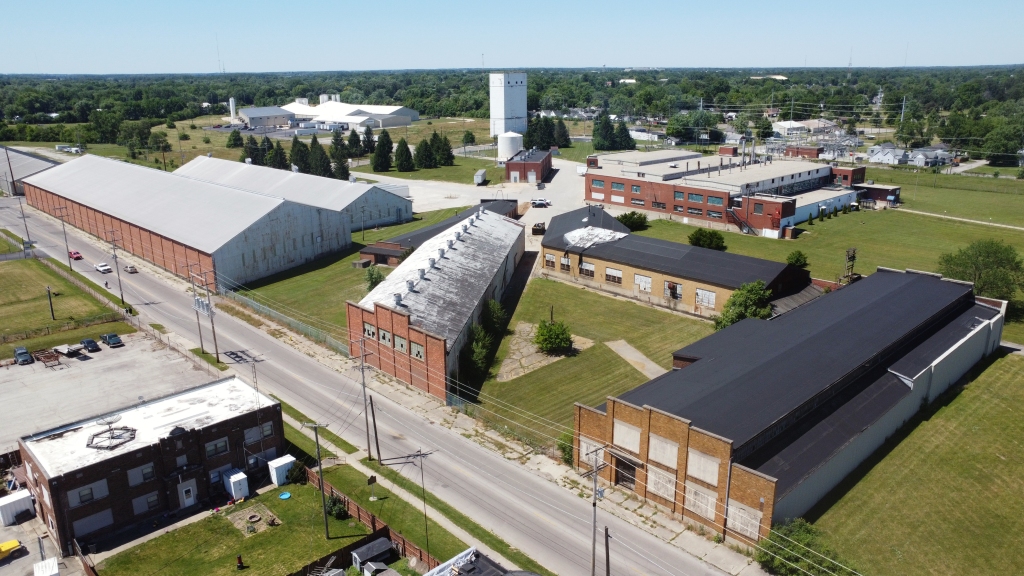
I was aware of Ball’s legacy in Muncie for most of my life, but I got a crash course when I started working at a call center for the company that licensed the Ball name. After moving to brand management, I visited the old glass factory which had been converted into a jar closure plant. Unfortunately, I didn’t pay it much attention. It wasn’t until I returned as a quality analyst and acting operations supervisor that I truly began to appreciate the significance of the place.
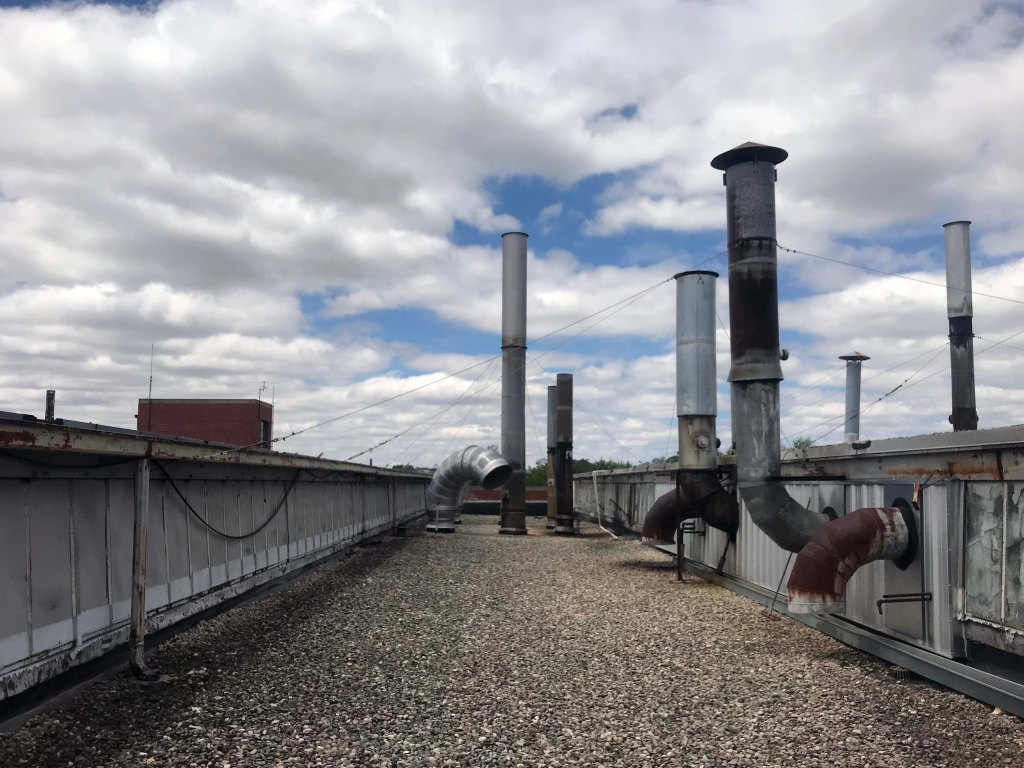
There was no time or reason to venture up to the roof when I worked in quality. I had nine lines to check each hour! Thankfully, supervising first shift was different. With only eleven hours of training and no auxiliary support on weekends, I had to handle perplexing tasks like troubleshooting the ventilation system of our ovens. I took a few photos every time I went up to the roof to check the chimneys.
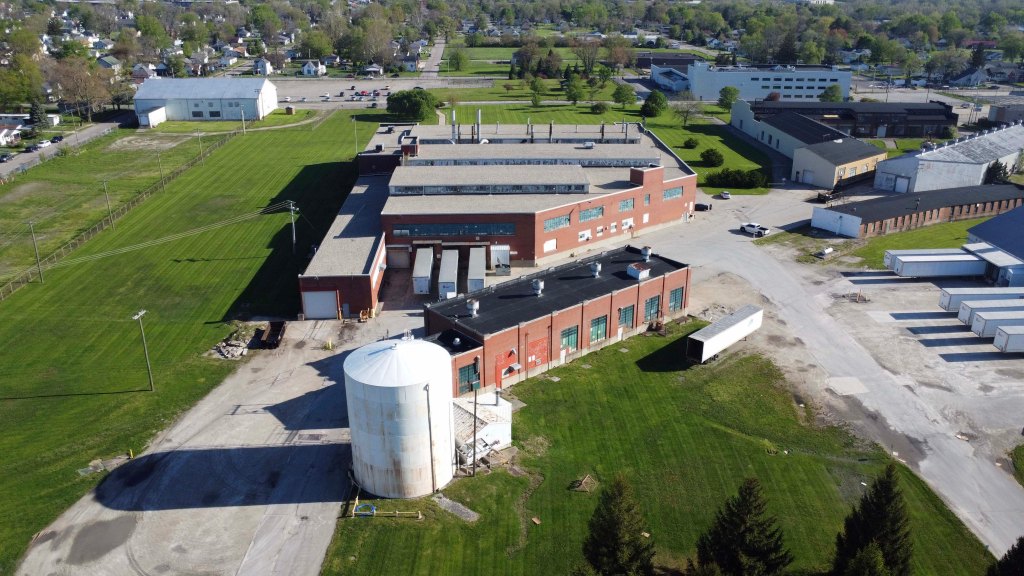
You’d think I’d have figured it out by now, but I’m still not exactly sure when what’s now known as Building 30, the closure plant, was built. Parts of it date back to at least 1896 when it served as the “cold end” of Ball Brothers’ Factory 11. On January 3, 1945, a $500,000 fire swept through the plant’s packing area, paper storeroom, and cafeteria2. Given its appearance today, I bet the building was rebuilt shortly afterward3.
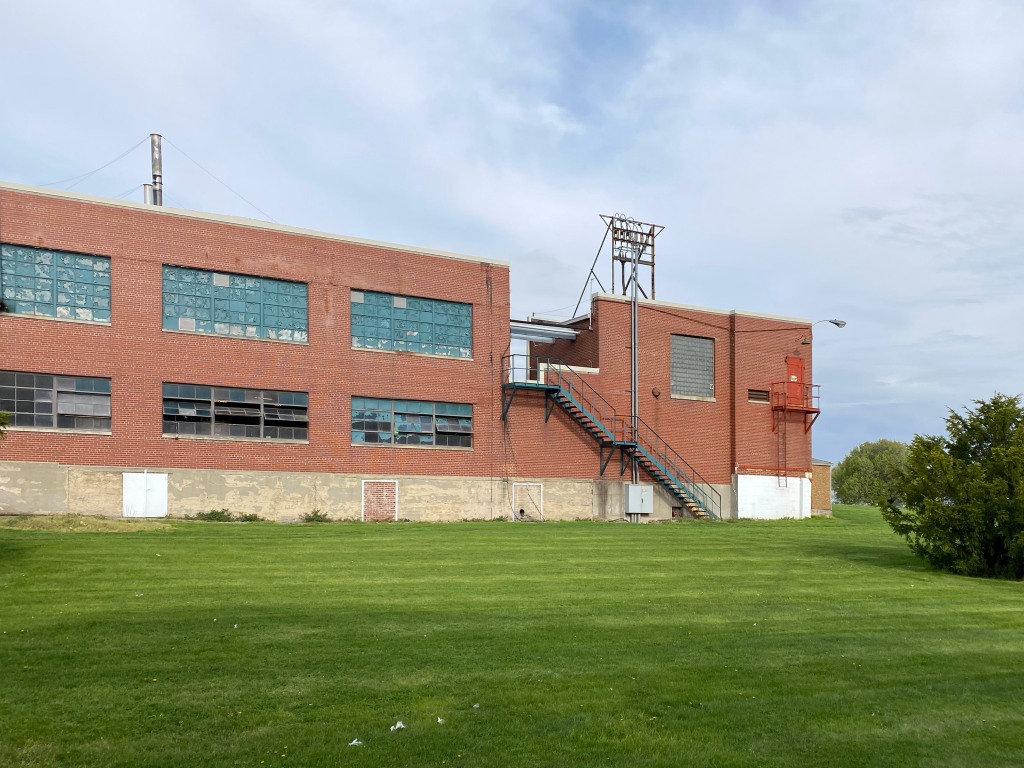
In a move that shocked everyone, Ball shut down its Muncie glassmaking operations in 1962. Fortunately, the company left some local operations intact4. Much of the campus was demolished, but Factory 1 was repurposed into a zinc mill that was reportedly one of the largest in the world. After Ball phased out zinc in favor of tinplate, the building was reconfigured to manufacture Ball’s new recipe for lids and bands5.

One thing that hasn’t changed since the building’s glassmaking days is the way to the roof. Ascending to the tallest heights of the plant involves climbing three stories in a stairwell at the building’s southeast corner. The stairs are cement up to a mezzanine that once stretched around the perimeter of the plant. Beyond that, the steps are open metal. At the top, mountaineers emerge from a tiny brick penthouse onto a gravel surface.
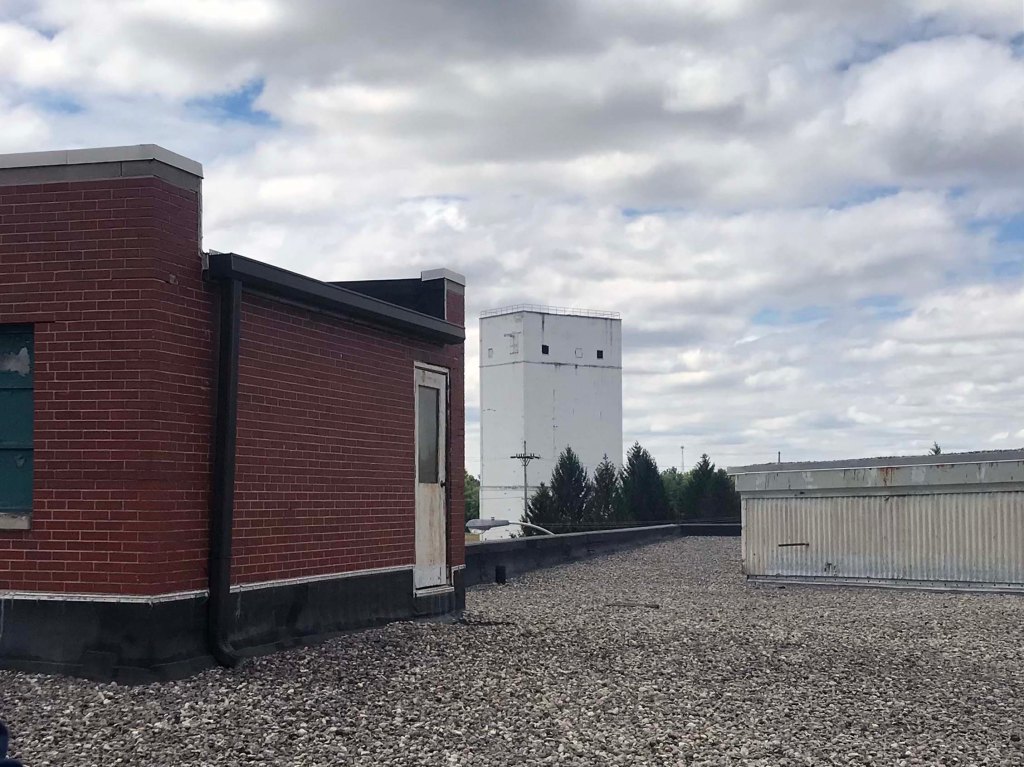
Turning left, the first sight is Ball’s old batch tower, a 132-foot sentinel that’s watched over southeastern Muncie for seventy years. Once the crown jewel of Ball’s Factory 2, the tower received raw materials for glassmaking and distributed them to storage bins6. From there, the materials were mixed, measured, and discharged to furnaces. The cement building is a landmark, but it hasn’t been used since 1962. My boss at the plant remembered having to climb up it to change its light bulbs. No thanks!
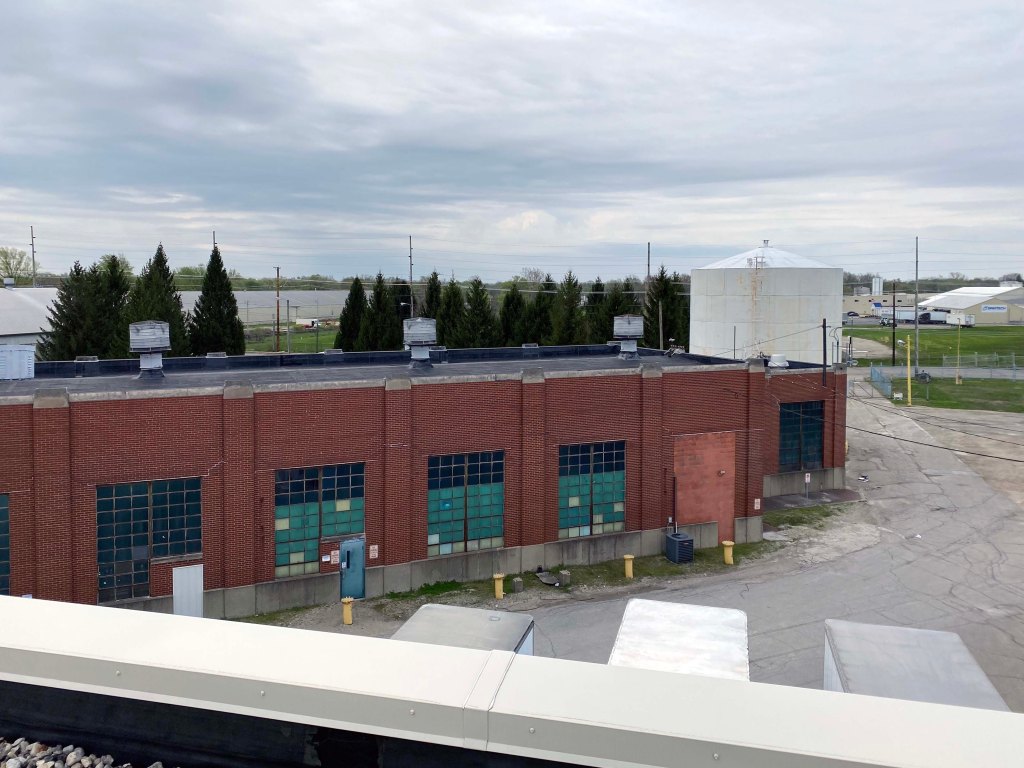
Building 38 sits between the plant and the tower. Built in 1945, the 5,680-square-foot structure first housed the boilers and power generators for Factory 1. When I worked at the plant, it served double duty as a compressor room and maintenance shop. A series of tunnels filled with pipes and tubes connected it to the other buildings on the property.
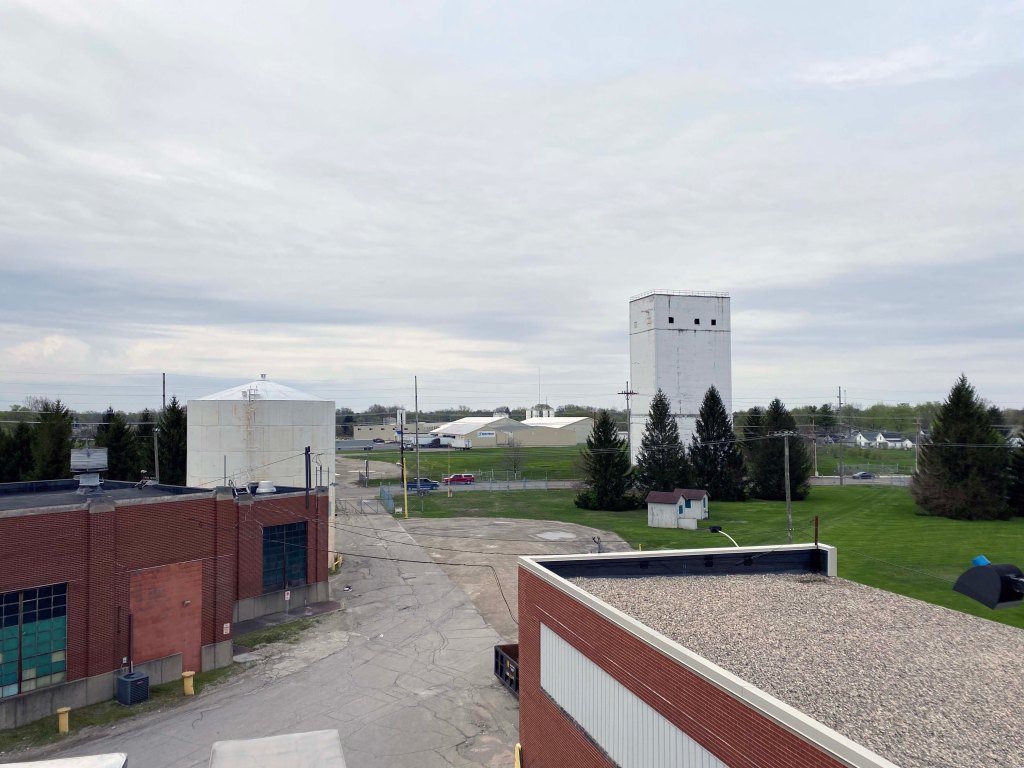
Looking south from the west side of the roof gives a commanding view of Building 38, the plant’s water tank, the batch tower, and two old Ball warehouses way off in the distance. Ball began producing plastic there in 1984. Fifteen years later, a successor, Alltrista, sold the operation to a company called Spartech. Today, Spartech produces co-extruded multi-barrel roll stock mostly for the food and beverage industry.
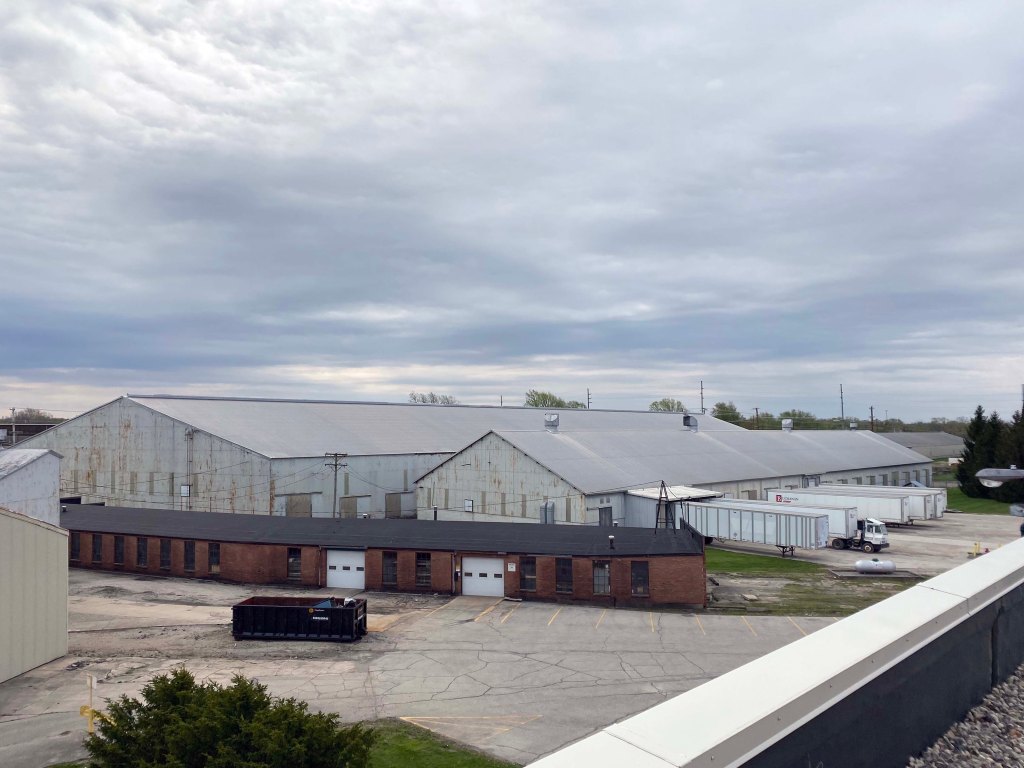
Buildings 5 and 6 stand just east of the closure plant. Constructed in the mid-1930s, they’re warehouses. A curving brick structure, Building 36, stands in front of them. Initially a mold shop, it used to connect to another warehouse that bridged the gap between Building 38. Its distinctive shape resulted from a former Muncie & Western rail spur that threaded through the property.
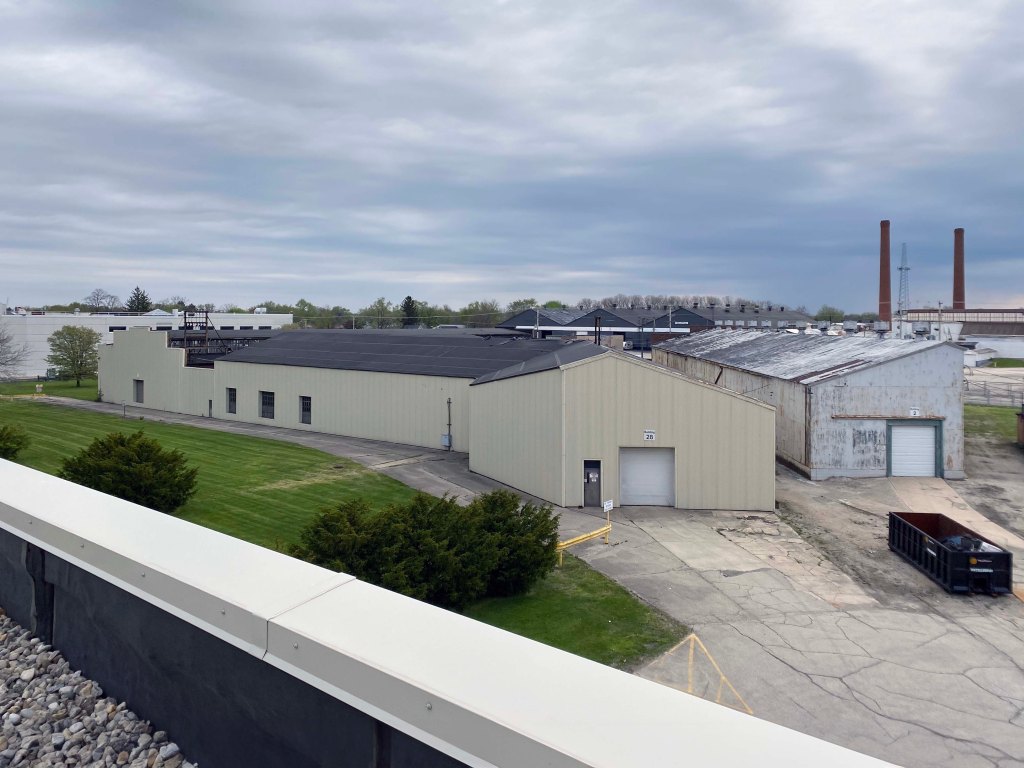
As a matter of fact, most of the buildings visible from the roof of the closure plant received their angular layouts because of the railroad. Arranged from right to left, Buildings 2, 28, and 25 sit just north of Building 36. Building 2 began its life as a glass warehouse and is, I think, the oldest structure on the property. Building 28 supported Ball’s zinc rolling mill, which was housed in Building 25.
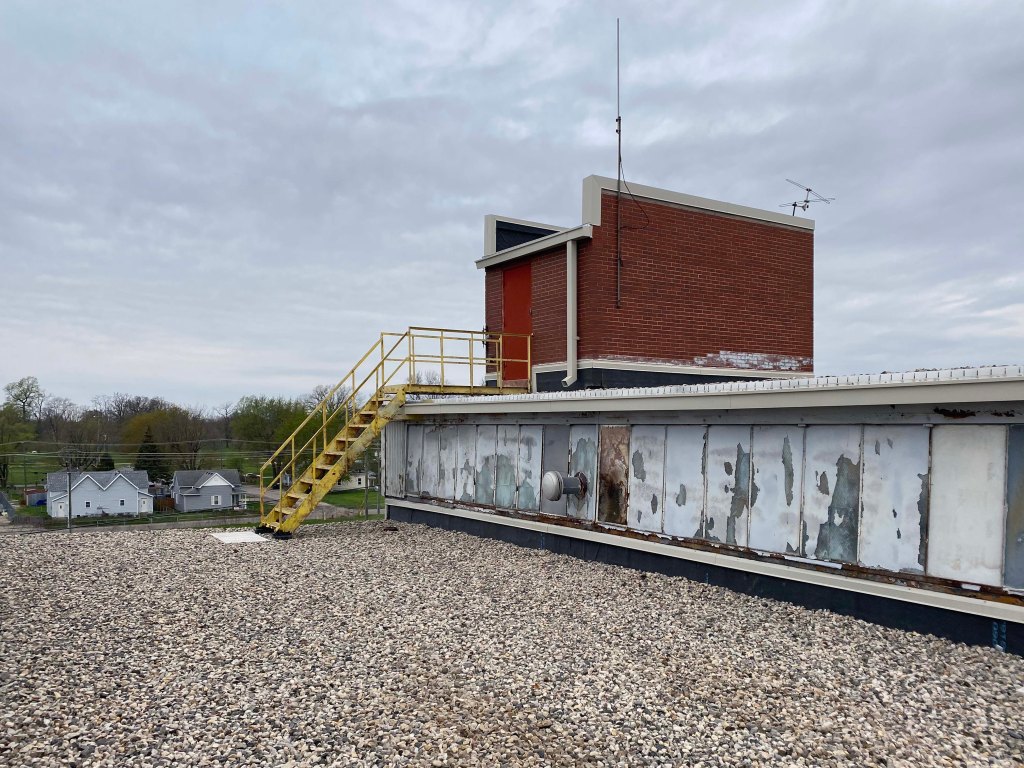
I spent nearly as much time observing my surroundings as I did inspecting the chimneys on my occasional trips to the roof of the closure plant! Unfortunately, it wasn’t enough- my desire for an even better vantage point was part of what prompted me to get a drone. I flew it over the campus a couple times and got some illustrative photos. At one point, all that was green was factories nearly as far as the eye could see.
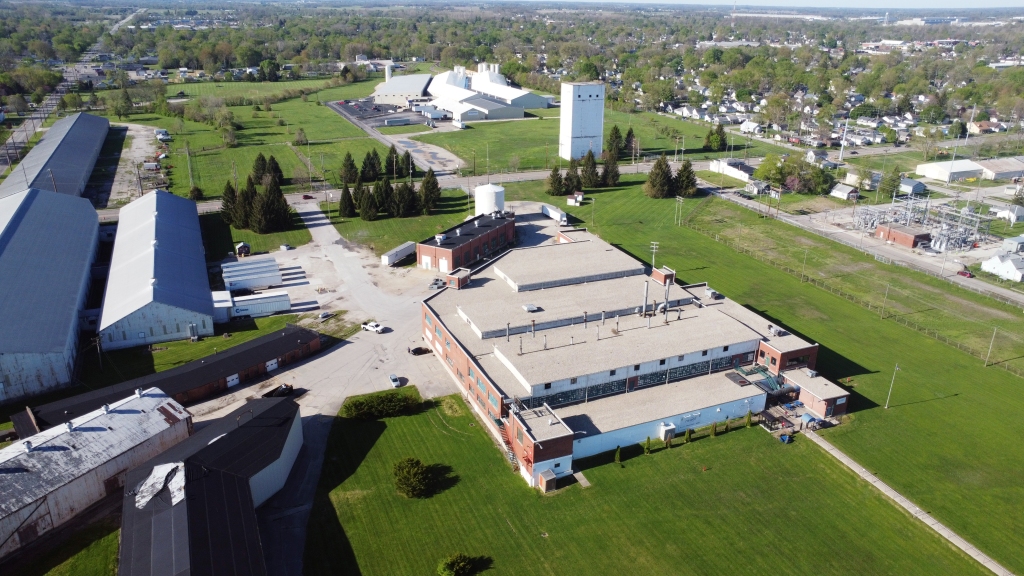
My two years at the closure plant were full of challenges. Anyone who worked there would tell you the same! Nevertheless, I treasure the experience today. Ultimately, the view from above gave me a new perspective on the seventy-hour weeks colleagues, friends, and I put in during the COVID-19 pandemic. I’m glad those days are part of my past, but I’m grateful for the lessons I learned at the old Ball factory, whether they came from the floor, the roof, or the air.
Sources Cited
1 Sanborn Fire Insurance Map from Muncie, Delaware County, Indiana (1896). Sanborn Map Company, Apr. Map. Retrieved May 18, 2024.
2 Cause of $500,000 Fire at Ball Bros. Plant Unknown (1945, January 3). The Muncie Evening Press. p. 1.
3 Delaware County Office of Information & GIS Services. (2024). Parcel ID: 1115481001000. Delaware County, Indiana Assessor. Map, Muncie, IN.
4 Last Glass Is Produced at Ball Factory (1962, March 20). The Muncie Evening Press. p. 2.
5 5 LaGuardia, J. (1987, June 11). Ball Corp. ‘family reunion’ to celebrate 100th year here. The Muncie Evening Press. p. 15.
6 Francisco, B. (1999, January 4). Towering presence. The Muncie Star Press. p. 7.
7 (See footnote 5).
8 (See footnote 1).
9 Cheesman, M. (1999, May 6). Alltrista to sell Muncie packaging division. The Muncie Star Press. p. 1.
10 (See footnote 1).
